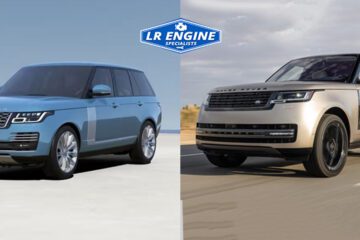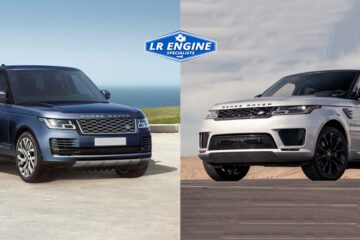The Range Rover Velar is a luxury SUV that offers a balance of power, refinement and fuel economy. The engine is one of the key components that makes this possible. We will examine the features and operation of the Range Rover Velar engine in this blog post, along with how it achieves efficiency and performance.
The Heart of the Beast
The Velar boasts a range of engines, but its most iconic powerplant is the Ingenium series. This cutting-edge engine is designed to deliver uncompromised performance while prioritizing fuel efficiency and environmental sustainability.
Ingenium Technology Unleashed
The Ingenium engine is a testament to Range Rover’s commitment to technological excellence. Incorporating advanced features such as direct fuel injection, variable valve timing, and a twin-scroll turbocharger, it ensures optimal power delivery and fuel economy.
Performance Redefined
One of the key aspects of the Velar’s engine is its ability to produce impressive power figures. The combination of high horsepower and torque allows for exhilarating acceleration and a dynamic driving experience, making every journey a thrilling adventure.
Efficiency at its Core
While delivering on the performance front, the Velar’s engine doesn’t compromise on efficiency. The use of lightweight materials, advanced aerodynamics, and a sophisticated start-stop system contribute to reduced fuel consumption and lower emissions.
Striking the Balance
Achieving the perfect balance between power and efficiency is no small feat, but the Velar’s engine manages it seamlessly. Whether driving through cities or on the interstate, the engine adjusts to the circumstances to maximize performance while maintaining fuel economy.
Which engines are available for the Range Rover Velar?
The Range Rover Velar offers three engine options: a 2.0-litre four-cylinder petrol engine, a 2.0-litre four-cylinder diesel engine and a 3.0-litre six-cylinder petrol engine. Each engine has its own advantages and characteristics, depending on the driver’s preferences and needs.
How does the 2.0-litre petrol engine work?
The 2.0-litre petrol engine is a turbocharged unit that produces 250 PS of power and 365 Nm of torque. It can accelerate from 0 to 100 km/h in 7.5 seconds and reach a top speed of 217 km/h. Additionally, it features a mild hybrid technology that stores energy in a battery by recovering energy while coasting and braking using a belt-integrated starting generator. This energy can then be used to assist the engine during acceleration, reducing fuel consumption and emissions.
How does the 2.0-litre diesel engine work?
The 2.0-litre diesel engine is also a turbocharged unit that produces 204 PS of power and 430 Nm of torque. It can accelerate from 0 to 100 km/h in 8.5 seconds and reach a top speed of 209 km/h. In addition, it features a mild hybrid system that functions similarly to the gasoline engine. It also features an innovative exhaust aftertreatment system that may cut emissions of nitrogen oxide by 90%.
How does the 3.0-litre petrol engine work?
The 3.0-litre petrol engine is a supercharged unit that produces 340 PS of power and 480 Nm of torque. It can accelerate from 0 to 100 km/h in 6.3 seconds and reach a top speed of 241 km/h. It also has a mild hybrid system that works in the same way as the other engines. Moreover, it has an electric supercharger that boosts the air intake at low speeds, enhancing responsiveness and performance.
What advantages does the mild hybrid system offer?
Without sacrificing performance or driving enjoyment, the Range Rover Velar engine can now run more fuel-efficiently and emit less emissions thanks to a clever technology called the mild hybrid system. The system can reduce fuel consumption by up to 6% and CO2 emissions by up to 8%, according to WLTP tests. The system also improves the start-stop function, making it smoother and faster.
What are the transmission options for the Range Rover Velar?
The Range Rover Velar comes with an eight-speed automatic transmission that delivers smooth and seamless gear changes, optimising performance and efficiency. The transmission also has a sport mode that allows the driver to manually shift gears using paddle shifters on the steering wheel, for a more dynamic and engaging drive.
How does the intelligent all-wheel drive system work?
The intelligent all-wheel drive system is another feature that enhances the performance and efficiency of the Range Rover Velar engine. The system can vary the torque distribution between the front and rear wheels, depending on the driving conditions and terrain, to ensure optimal traction and stability. The system also has a torque vectoring function that can apply braking force to individual wheels, to reduce understeer and improve cornering.
How does the adaptive dynamics system work?
The adaptive dynamics system is an optional feature that monitors the vehicle’s movements up to 500 times per second, and adjusts the damping forces of each shock absorber accordingly, to provide the best balance of comfort and control. The system also has a configurable dynamics function that allows the driver to personalise the settings of the suspension, steering, throttle and transmission, according to their driving style and preferences.
How does the terrain response system work?
The terrain response system is another optional feature that allows the driver to choose from six driving modes: Comfort, Eco, Grass/Gravel/Snow, Mud/Ruts, Sand and Dynamic. Each mode adjusts the settings of the engine, transmission, suspension, steering and brakes, to suit different surfaces and situations. The system also has an auto mode that can automatically select the best mode for the current conditions.
How does the air suspension system work?
The air suspension system is an optional feature that replaces the conventional coil springs with air springs, which can adjust their height according to the speed, load and terrain, to provide optimal ride quality and handling. The system also has an access height function that lowers the vehicle by 40 mm when parked, to facilitate entry and exit. The system also has an off-road height function that raises the vehicle by 46 mm when driving on rough terrain, to increase ground clearance and wading depth.
FAQs
What is the fuel consumption and CO2 emissions of the Range Rover Velar engine?
The fuel consumption and CO2 emissions of the Range Rover Velar engine vary depending on the engine option, transmission option and driving conditions. According to WLTP tests, the 2.0-litre petrol engine has a combined fuel consumption of 8.7-9.4 L/100 km and CO2 emissions of 198-214 g/km, the 2.0-litre diesel engine has a combined fuel consumption of 6.3-6.8 L/100 km and CO2 emissions of 165-178 g/km, and the 3.0-litre petrol engine has a combined fuel consumption of 10.9-11.6 L/100 km and CO2 emissions of 248-264 g/km.
What is the warranty and service interval of the Range Rover Velar engine?
The Range Rover Velar engine comes with a three-year or 100,000 km warranty, whichever comes first. The service interval is one year or 26,000 km, whichever comes first.
How can I test drive the Range Rover Velar?
You can book a test drive of the Range Rover Velar by visiting our website or contacting your nearest dealer. You can also explore the features and specifications of the Range Rover Velar online or by downloading our brochure.


